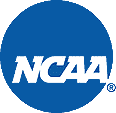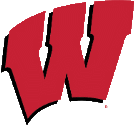The Jan. 25 unveiling of USCHO.com’s 2005-06 Division I Women Pairwise Rankings (PWR) likely raises more questions than it answers. This column answers the most pressing questions.
What is the best available bracket projection right now?

Harvard at No. 1 Wisconsin
Minnesota at St. Lawrence
Mercyhurst at Minnesota-Duluth
Princeton at No. 2 New Hampshire
Where is Clarkson in that bracket?
Clarkson is ineligible because the program is in its second year of reclassifying from D-III to D-I. NCAA rules require a two-year waiting period before Clarkson is eligible at the higher level. This rule applies for all schools reclassifying in any sport, except for D-I basketball. Rensselaer is ineligible for the same reason.
Did you project the bracket simply by pairing the top eight teams in the PWR appropriately?
No, it just happens to work out that way right now. The process is not that simple. You have to account for a few minor differences between the current PWR and the NCAA criteria, and you have to consider the NCAA’s priorities in pairing teams.
So what are these differences between the current PWR and the NCAA criteria?
First, note the five NCAA selection criteria–
• Rating Percentage Index (RPI) [won-lost record (35 percent), opponents’ winning percentage (50 percent) and opponents’ opponents’ winning percentage (15 percent)];
• Head-to-head competition;
• Results versus common opponents;
• Results during the last 16 games; and
• Results against teams at .500 or above in the RPI.
There are a few caveats you need to keep in mind when perusing the PWR, which attempt to model the NCAA’s criteria.
•Automatic Bids
The ECACHL, Hockey East, and WCHA champions get automatic bids for the championship, and there are five at-large selections determined by the NCAA criteria mimicked by the PWR. The autobid winners will not be known until March, so for now the best bracket projection just takes the top eight teams. This makes some teams’ selection look more secure than it really is. In the current bracket, for example, Harvard and Princeton would be bumped out if Providence and Brown were to win autobids.
Note that if Clarkson wins the ECACHL, the league will not receive an automatic bid.
•Last 16 Games
Unlike men’s hockey, women’s hockey still uses record in the last 16 games as an NCAA selection criterion. The current PWR are always calculated using the last 16 games available, rather than what will likely be the last 16 games at the end of the season. Many teams have only just begun to play those last 16 games.
In the above bracket projection, I looked at which comparisons depended on games that were unlikely to be included in the last 16 at the end of the season. I found this did not make any difference right now, but that will not necessarily hold true later in the season.
•Record vs. Teams with RPI > .500
Just note that in a volatile season like this one, the subset of teams with RPI above .500 changes every week. This matters a lot for the PWR, especially for teams in conferences that play opponents four times.
•RPI adjustments
Since the 2003-04 season, the RPI used by the NCAA for the selection purposes has differed slightly from the PWR RPI. The NCAA drops up to four regular season games and all postseason games that lower a team’s RPI when included in the calculation.
To see how this works, take Wisconsin for example. Wisconsin’s current RPI of .65 can be written as the average of the RPI value for each game on the Badgers’ schedule. For instance, the RPI values for a win over UMD, the loss to New Hampshire, and a win over Vermont, respectively, are approximately .83, .52, and .48 (yes, a loss to UNH is indeed better for RPI than a win over Vermont). The RPI values for Wisconsin’s two wins over Vermont and two wins over North Dakota are less than Wisconsin’s unadjusted RPI of .65, so they get dropped from the calculation, and Wisconsin’s new RPI becomes .68.
So what effect does this have on the current RPI? Not much among the top 10. Wisconsin jumps above UMD by a considerable margin, and Harvard jumps ahead of Princeton, but neither of these changes affect the current PWR. But these adjustments could matter down the stretch.
There is a simple heuristic that usually works for figuring out whether the adjusted RPI matters. First, note if two teams are close in the RPI, less than .01 apart from each other. Second, note if the trailing team has played a couple more games to date against any of the bottom four teams – Union, Vermont, Robert Morris, and Sacred Heart. In most scenarios, these are the only teams who have struggled enough to make the adjustment relevant. Applying this heuristic to the current RPI, you can tell Wisconsin will pass UMD, because Wisconsin played Vermont twice, and UMD played none of the bottom four. You can tell Harvard will pass Princeton, because Harvard played Union twice and Robert Morris once, and Princeton has yet to play the bottom four.
What are the caveats for how the NCAA pairs teams?
Now that the NCAA has a one-year precedent in producing an eight-team bracket, the tournament committee’s actions are somewhat easier to predict.
There was speculation last year that the NCAA would be willing to sacrifice bracket integrity (i.e. paring teams 1v8, 2v7, 3v6, 4v5) for the sake of minimizing travel costs. This speculation was justified, since the tournament handbook explicitly said that minimizing travel costs is a top priority aside from protecting the top two seeds, and this practice was followed in most every NCAA sport that did not have a profitable championship. However, to the benefit of women’s hockey, the NCAA preserved bracket integrity even though it meant flying all four teams to their quarterfinal matchups.
However, the NCAA will unquestionably sacrifice bracket integrity for one reason – avoiding intraconference matchups in the first round. Having interconference competition is fundamental to NCAA ideals in organizing national championships. It turned out last season that the bracket with perfect integrity also avoided intraconference matchups, and that holds true for the current bracket projection for this season, although it might not hold true down the stretch. For instance, if Minnesota maintained the No. 5 spot and No. 4 St. Lawrence and No. 3 Minnesota-Duluth swapped rankings, the Gophers would likely still be paired with St. Lawrence.
One last point — that the NCAA was willing to pay to preserve perfect bracket integrity last season does not necessarily mean it will happen every season. Last season, the NCAA could have saved money by sending Providence to host sites at Dartmouth or Harvard. But ranking-wise, No. 1 Minnesota was so clearly above the rest of the field, and Providence was so clearly below the rest of the field, that it was only fair to send Providence to Minnesota. This season, there are potential scenarios for which the right decision might not be so clear-cut. If perfect bracket integrity dictated that Mercyhurst visit UNH, it would be entirely reasonable for the NCAA to send Harvard or Princeton instead to prevent air travel, provided that the Lakers were close enough to either school in the rankings. How close is close enough is still an entirely ambiguous case-by-case process, however. Such scenarios do not appear to be probable at the moment, but they are worth considering.
Which games this weekend are most important to NCAA prospects?
Both of them are at New Hampshire – Mercyhurst on Friday and Providence on Sunday. This is the toughest weekend left on UNH’s schedule, so it will go a long way in determining whether the Wildcats get a top seed and home ice. For the Lakers, Friday’s game is a must-win if they have ambitions of hosting a quarterfinal game, and a win would go a long way towards solidifying their NCAA at-large selection. Providence, meanwhile, needs good results against UNH to have any hope of an at-large selection.
So what does my favorite team need to do to move up or avoid moving down in the NCAA’s rankings?
This is an incredibly complicated question to answer, since there are still seven weekends of hockey left before selections are announced. However, I will give it my best shot.
Whenever possible, I have tried to simplify team comparisons to relative losses – i.e. Team A will move ahead of Team B if Team B loses X more games than Team A. Even though the NCAA criteria are complicated, these simplifications will often hold true.
A disclaimer, the following statements are not mathematical identities, although they aim to be true for most probable outcomes. Their derivation did not examine outcomes in which the nation’s top 10 teams lost to the nation’s bottom four teams, or every scenario where opponents rose and fell below .500 in the RPI. This analysis will, however, give a general idea of how far apart various teams are. They will be updated and become more precise as the season progresses. For now, I can say a lot more about the top six teams than the bubble teams, because the top six teams have a put a lot more distance between each other and everyone else.
To avoid repetition and to encourage brevity, teams are presented on the basis of what they need to do to maintain their current position in the bracket. So discussion of what New Hampshire needs to do to pass Wisconsin is in the Wisconsin section.
•No. 1 Wisconsin

The Badgers remain in firm control of their own destiny in the hunt for the No. 1 seed, despite their head-to-head loss to No. 2 New Hampshire. Wisconsin would likely have to lose two more games than UNH, Minnesota-Duluth, or St. Lawrence down the stretch to fall out of the No. 1 spot. It would take a colossal collapse for the Badgers to fall out of the top four spots — such as losing three more than the Gophers, including all their remaining head-to-head matchups.
•No. 2 New Hampshire

The Wildcats are entrenched in the No. 2 spot. They would likely have to lose two more games than Minnesota-Duluth, St. Lawrence, or Minnesota down the stretch to fall behind any of them. Mercyhurst, despite being only No. 6 right now, has the easiest path to winning a comparison against the Wildcats. If the Lakers beat UNH head-to-head on Friday, beat BC on Saturday, and maintain a better record than UNH down the stretch, then the Lakers will likely win the comparison. However, the Mercyhurst victory will be of no consequence if UNH does not slip further in the rankings, so that the Lakers would match the Wildcats in total comparisons won.
•No. 3 Minnesota-Duluth
The Bulldogs would likely have to lose two more games than St. Lawrence or Minnesota to fall behind either team. If UMD and Minnesota both win out, and Minnesota beats UMD in the WCHA semifinals and wins the tournament, that still would not be enough for the Gophers to jump the Bulldogs. UMD would have to lose at least five games down the stretch to fall behind Mercyhurst, even if the Lakers won out.
•No. 4 St. Lawrence
The Saints do not control their own destiny for home ice – Minnesota does. If the Gophers lose as many games as St. Lawrence down the stretch (or both teams win out), the Gophers will be the team that gets home ice. However, it will be tough for Minnesota to achieve this with a regular season series against Wisconsin and the WCHA tournament looming. The Saints would have to lose about four more games than Mercyhurst down the stretch to fall behind the Lakers.
•No. 5 Minnesota
The Gophers, with two head-to-head wins over Mercyhurst, would have to lose about four games more than Mercyhurst down the stretch to fall behind the Lakers. Given Minnesota’s tough schedule and Mercyhurst’s relatively weak schedule, this scenario is not improbable.
•No. 6 Mercyhurst
The gap between the top five and Mercyhurst is a lot larger than the gap between Mercyhurst and everyone else. Because of the Lakers’ weaker schedule down the stretch, Providence, Princeton, and Harvard can all pass Mercyhurst if they get through their schedules with one loss or fewer and Mercyhurst loses one more game. However, the good news for Mercyhurst is that none of those teams have shown the consistency to put together that kind of run down the stretch, so Mercyhurst will likely have some room for error in securing a second straight at-large berth.
•No. 7 Harvard and No. 8 Princeton
Harvard and Princeton are neck-and-neck, and the upcoming February matchup between the teams looms large. Simply put, whichever team wins more games down the stretch will finish ahead of the other.
In terms of holding off No. 9 Providence for an at-large berth, Harvard is in better shape with a head-to-head victory over Friars, since Princeton has a head-to-head loss against the Friars. But both teams have a sizeable advantage in RPI, and if both avoid losing more than Providence down the stretch, they will be in good shape.
The biggest threat to Harvard and Princeton’s NCAA at-large status is not Providence, however, it is New Hampshire and St. Lawrence, as both teams could take at-large spots if they do not win their conferences’ autobids. The same goes if someone other than the WCHA’s top three wins that conference tournament. The surest way for Harvard or Princeton to make NCAAs is to win the ECACHL, and if not, each team, better hope there are not any more surprises. Because the Hockey East tournament is a week before the ECACHL tournament, both teams will have a good idea what they need to do to advance going into their conference semifinals – provided they each make it that far.


